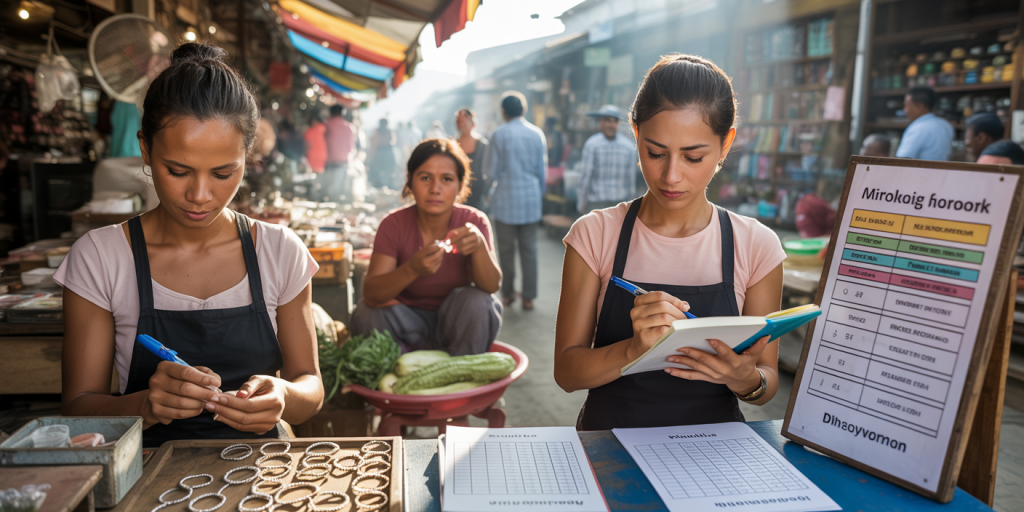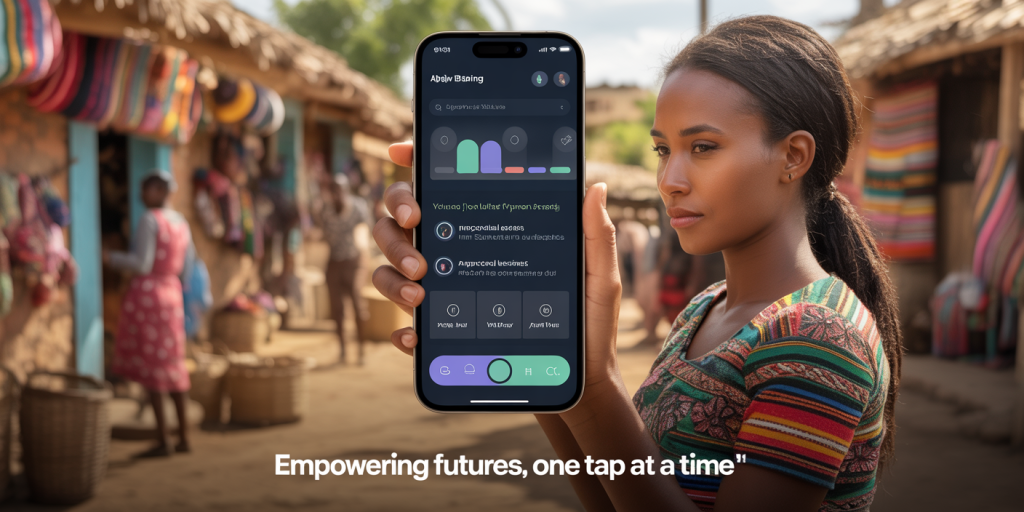Poverty remains one of the most pressing issues worldwide, affecting over 700 million people living on less than $1.90 per day according to the World Bank (2023). This economic challenge is often cyclical, passed down through generations due to a lack of access to resources, opportunities, and crucially, financial knowledge. Breaking this cycle requires more than just charity or temporary aid; it demands empowering individuals with the tools necessary to manage money effectively, build assets, and make informed financial decisions. Financial education emerges as a powerful catalyst in this endeavor, offering practical solutions for long-term poverty alleviation.
Research consistently demonstrates that financial literacy enhances financial stability by improving budgeting habits, encouraging savings, and reducing debt reliance. Countries and organizations investing in financial education have seen marked improvements in their populations’ economic well-being. For example, a 2022 OECD study found that adults with high financial literacy are 30% more likely to save for emergencies and 20% more likely to invest in retirement plans. This article delves into how financial education aids in breaking the poverty cycle, supported by practical examples, comparative data, and future outlooks.
Understanding the Roots of Poverty and the Role of Financial Education
Poverty is not simply a lack of income but often a lack of financial knowledge and resources that can sustain economic growth at an individual and community level. Marginalized populations often face financial exclusion due to limited understanding of banking systems, credit, and investment possibilities. Such gaps make budgeting, saving, and accumulating wealth difficult, perpetuating cycles of debt and economic vulnerability.
For instance, many low-income families rely heavily on high-interest payday loans without understanding their long-term impact. These practices trap individuals in debt spirals rather than offering solutions. Financial education can demystify these concepts, teaching alternatives like credit unions, formal savings accounts, and government aid programs, which can form the foundation for economic resilience.
Several case studies bear this out. The Grameen Bank initiative in Bangladesh, which combines financial services with drills in financial literacy, has empowered millions of rural women into entrepreneurship and lifted many families out of poverty. This model shows that education tied to practical financial tools is a potent measure for sustainable poverty reduction.
Practical Benefits of Financial Literacy for Low-Income Families
Financial education equips individuals with the knowledge to manage limited resources effectively. This encompasses budgeting to control expenses, understanding credit scores to avoid predatory lending, and fostering saving habits for emergencies or investments. A well-informed household is better positioned to maximize income and reduce economic shocks.
In the United States, a 2021 FINRA study revealed that only 34% of adults demonstrated basic financial literacy, contributing to nearly 60% living paycheck to paycheck. Educational programs targeting these populations through workshops and community initiatives have shown measurable effects. For instance, the *Money Smart* program by the FDIC has helped over 1.5 million participants improve budgeting and saving practices, leading to an average 15% increase in emergency savings within six months.
Additionally, financial education affects mental well-being. According to the American Psychological Association (2023), financial stress is a significant contributor to anxiety and depression. By equipping people with tools to manage their finances, education reduces this burden, enabling better focus on personal development and earning opportunities.
Comparative Table: Financial Literacy Impact on Savings and Debt
| Region | Financial Literacy Rate (%) | Average Emergency Savings ($) | Average Debt-to-Income Ratio (%) | Poverty Rate (%) |
|---|---|---|---|---|
| United States | 34 | 400 | 36 | 11.4 |
| Germany | 66 | 1,200 | 21 | 9.7 |
| India | 24 | 150 | 45 | 16.8 |
| Kenya (urban areas) | 38 | 300 | 40 | 15.3 |
*Source: OECD Global Financial Literacy Survey (2023), World Bank Poverty Data (2023)*
This table illustrates a correlation between higher financial literacy and better savings behavior, lower debt burden, and reduced poverty. The disparity confirms the need for targeted financial education programs to elevate these numbers, especially in low-income and emerging economies.
Real-Life Success Stories Empowered by Financial Education
A compelling example is the initiative led by the nonprofit *Kiva* in East Africa, which integrates microloans with financial training. Women entrepreneurs receiving financial literacy coaching increased their profits by an average of 25% within a year. One beneficiary, Asha, utilized acquired skills to track inventory, budget expenses, and negotiate better loan terms, allowing her to expand her small grocery business sustainably.

Similarly, in Mexico, the *Finanzas para Todos* program launched by the Ministry of Finance offers free access to financial education online and through community events. Studies reveal that participants are twice as likely to save and 40% more likely to avoid high-interest credit. These skills empower participants to build assets, reducing dependence on informal, riskier financial services.
These cases emphasize that pairing education with access to financial products transforms knowledge into tangible economic progress. By trusting, budgeting, and investing wisely, low-income individuals can build wealth over time, creating ripple effects throughout communities.
Overcoming Barriers to Financial Education Access
Despite its benefits, financial education faces significant delivery challenges. Many impoverished communities lack internet access or stable schooling, hindering traditional educational approaches. Language barriers, cultural differences, and mistrust of financial institutions further complicate engagement.
Innovative solutions are emerging to address these gaps. Mobile banking platforms in countries like India and Kenya use SMS and app-based tutorials in local languages to reach rural populations. The *Camino Financiero* project in Latin America employs peer educators who understand community needs and values, enhancing program effectiveness.
Government and NGO partnership models expand outreach through schools, workplaces, and religious organizations. For example, integrating financial literacy in secondary education curricula ensures earlier exposure and habit formation. The *National Financial Educators Council* reports that students with formal financial education are 33% more likely to save regularly and 22% more likely to avoid credit misuse by adulthood.
The Role of Technology and Digital Tools in Financial Literacy
Digital technology revolutionizes financial education by making it scalable, interactive, and accessible. Educational apps, gamified learning modules, and online budgeting tools engage users more effectively than traditional lectures. For example, platforms like *Zogo* deploy game mechanics and rewards to teach personal finance, boasting user retention rates 50% higher than average educational apps.
Furthermore, fintech innovations provide safer alternatives to informal borrowing, empowering users to apply financial concepts practically. Mobile wallets, micro-investing apps, and peer-to-peer lending platforms often incorporate tutorials or guided usage, enhancing user competence while promoting financial inclusion.

A 2023 study by the World Economic Forum highlights that increased smartphone penetration enables delivery of financial education to over 2 billion unbanked adults globally. Embracing these technologies, particularly in underserved regions, expands the impact of educational programs exponentially.
Future Perspectives: Expanding Financial Education to Break Poverty Cycles
Looking ahead, scaling financial education will require integrated efforts from governments, private sector actors, and civil society. Policies aimed at mandating financial literacy in school curricula, incentivizing employer participation in employee financial wellness programs, and funding community outreach will be critical.
Importantly, education must evolve beyond basic literacy to include digital finance skills, investment principles, and entrepreneurial knowledge. As automation reshapes labor markets, financial resilience will hinge on adaptability and diversified income strategies, which education can foster.
Data-driven monitoring and evaluation will optimize program delivery, ensuring resources target populations most at risk. Partnerships with technology providers can broaden reach while ensuring inclusivity by addressing digital divides.
In conclusion, financial education is not a panacea but stands as a foundational strategy for empowering low-income individuals and communities worldwide. Its ability to foster autonomy in money management, increase asset accumulation, and improve mental well-being collectively disrupts the systemic disadvantage underpinning poverty. Through continued innovation and collaboration, financial literacy can become a universal tool, aiding millions in escaping poverty for good.


Deixe um comentário